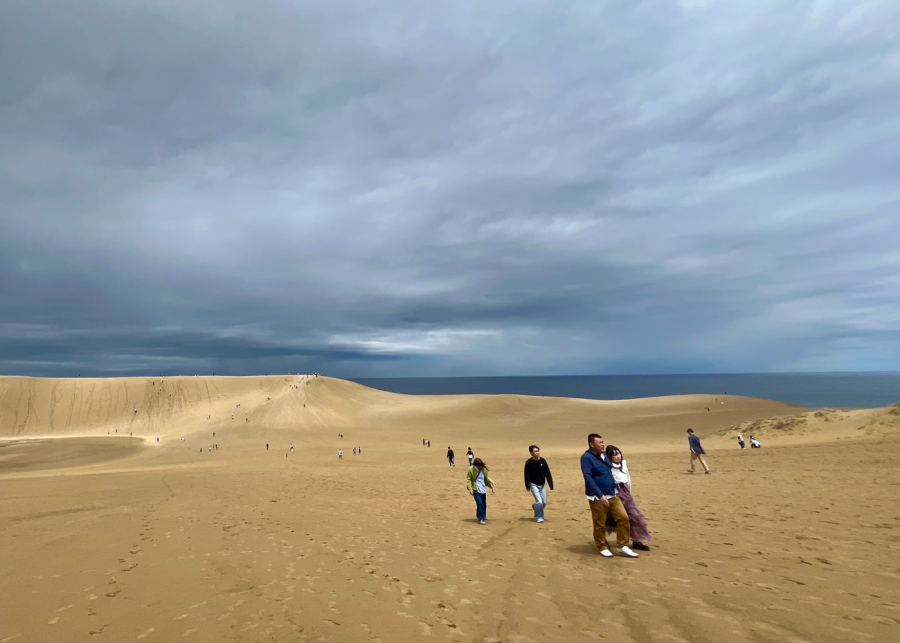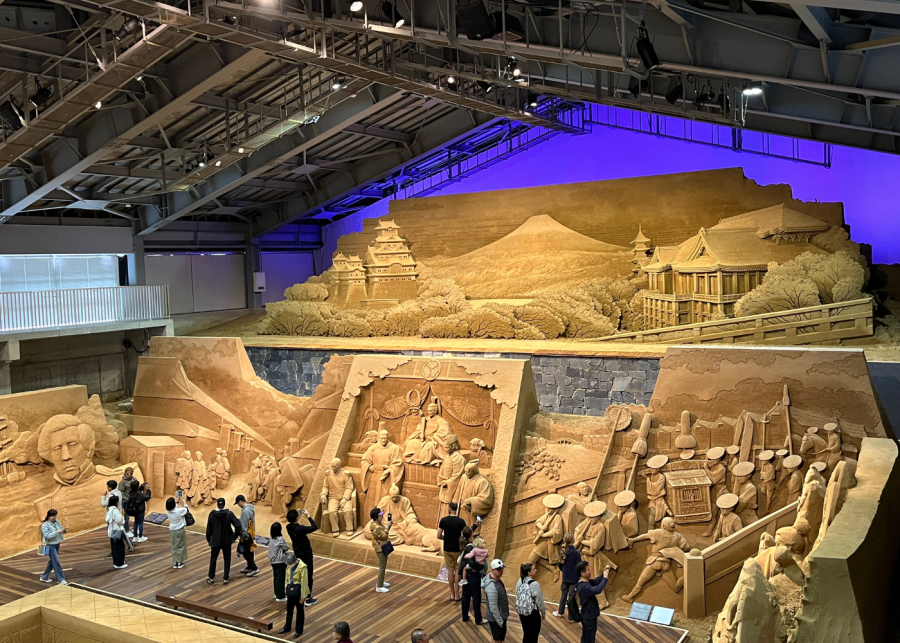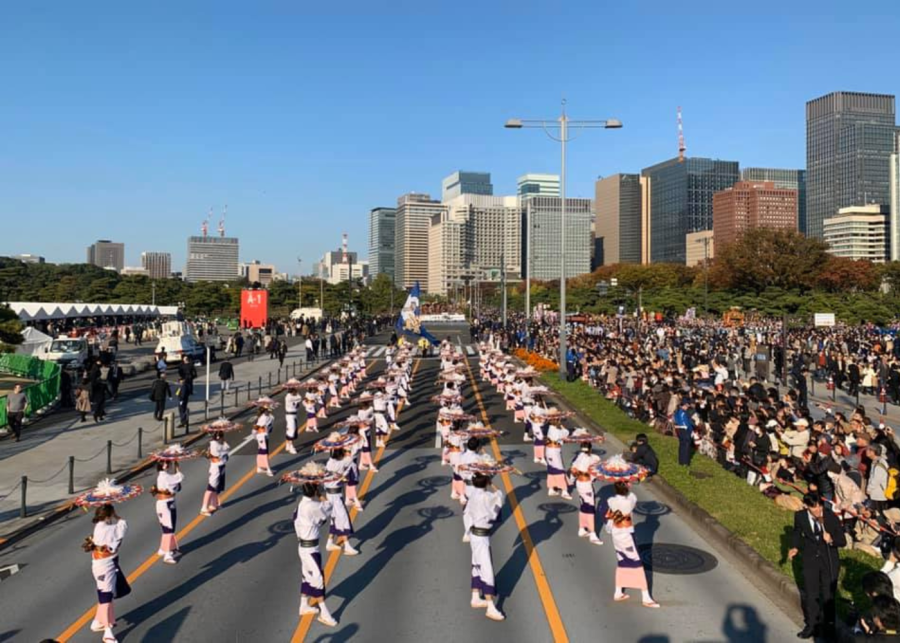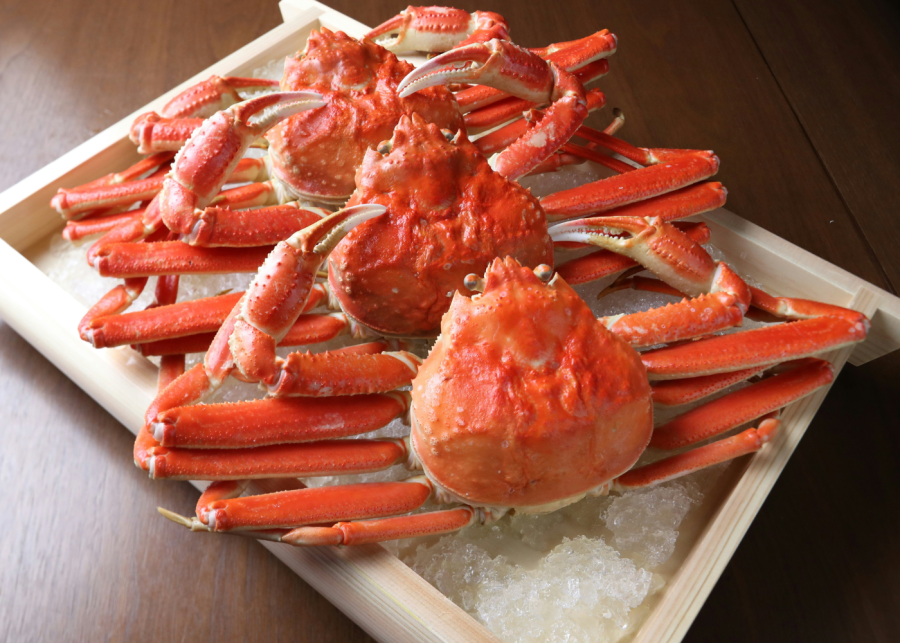
Experience all the best things to do when you visit Tottori, which is famous for its sand dunes.
Tottori City, the capital and biggest city of Tottori Prefecture, is famous for its sand dunes, the largest in Japan. As someone who lives in Japan, I love exploring the country’s far-flung cities beyond the popular ones. So when my curiosity got the better of me, I took a trip to the region during Golden Week. Here’s what I’d recommend…
Top things to do in Tottori City
1. Sand dunes

Considered one of Japan’s 100 most geologically significant sites, the Tottori sand dunes are located within a special protected area called the San’in Kaigan National Park, a Unesco Global Geopark. They’re a natural geological phenomenon that has formed over the past 100,000 years. At present, three rows of sand dunes run almost parallel to the Sea of Japan, with the tallest rising over 50 meters tall!
The best area to visit sits between the Tottori Sand Dunes Visitor Centre and the Sea of Japan coastline, where the largest dunes are located. Tip: stand in the natural basins and gaze up for an incredible experience. Visiting on a windy day, the contrast of the greyish-blue skies with the vast brown landscape made me feel like I was standing at the edge of the world.
Oh, and the sand dunes aren’t just for viewing. Sandboarding, sledding, paragliding, sandcastle building, sand painting, camel rides, and even water sports like canoeing and kayaking are available in the area. Simply visit the Visitor Centre website for more information.
How to get there: From Tottori Station, take a dedicated bus called the Tottori Sand Dunes Line. Pro tip: look for the huge sand dunes decal on the side of the bus! It’s a quick 20-minute ride, and prepare coins for your fare, as not all public buses have IC card machines.
I recommend getting off at the Sand Museum stop and walking along the main street to enter the sand dunes closer to the Visitor Centre. This entrance is closer to the tallest dunes and the coast. On your way out, this gate is also closer to restrooms, as well as restaurants and food stands.
2. Sand Museum

Situated next to the dunes, this museum features sculptures and artwork made entirely from – you guessed it – sand! This is the world’s first permanent indoor museum dedicated to sand sculptures, created by a team of artists from all over the world.
The theme is “travel around the world in sand”, and every year for the last 16 years, the team chooses a country and creates stunning sculptures that best represent its ethos and culture. Other countries previously featured include Egypt, France, Austria, and China, just to name a few.
This year, the featured country is Japan. Exhibitions are made entirely out of sand, and I was so impressed with the intricacy of the designs, the details on every subject, and the composition of each piece. After experiencing each sculpture up close, there’s a viewing platform on the floor above to give you a sense of the scale of these incredible artworks. This museum was an unexpectedly fun experience, and I can’t recommend it enough!
3. Tottori Castle ruins

During Japan’s Middle Ages, Tottori was ruled by Tottori-no-Yoshikatago, a powerful samurai warlord. While not much is known about his life, he established Tottori as a stronghold castle town. In 1545, Tottori Castle was built on the summit of Mount Hisamatsu, a large mountain within the city’s limits.
Today, only the main castle gate, the bridge leading up to this gate, the castle tower’s base, and the stone walls remain. These castle ruins are designated as a national historical site, and if you’re up for a hike, there’s a trail up the mountain that will bring you to the summit.
Time your trip right, and you might even be able to catch the Tottori Castle Ruins Tokimeki Marche. The next daytime market happens on 6 September and 11 October, while the next night market is on 4 October. Both feature food trucks selling hot street food like pizza, burgers, donburi rice bowls, and an assortment of sweet treats. Handmade jewellery, artisanal pottery, scents and perfumes are sold by local craft stores, too.
How to get there: Take the green 100 yen bus from Tottori Station and alight at stop 12, the Municipal Martial Arts Hall. The ride takes 9 minutes, depending on local traffic.
4. Jinpukaku grounds

Next to the castle ruins is Jinpukaku, a western-style French Renaissance mansion originally built in 1907. This used to be the residence of the Ikeda Clan, feudal lords who ruled Tottori during the Meiji and Taisho eras.
Today, the mansion is a historical site, although the main building is currently closed for cultural heritage preservation work. The grounds will reopen in 2028, when restoration works are complete. But the main garden with the pond is still open for guests to wander around in!
5. Tottori Mingei Museum of Folkcraft

Step into the Tottori Mingei Museum of Folkcraft to gaze at 5,000 pieces of traditional craft. With rotating exhibits, the exhibitions showcase artefacts based on themes – from textiles and photographs, to wicker baskets and ceramics from Japan, as well as China and Korea.
P.S. the museum is open every day except Wednesdays from 10am to 5pm, and costs 500 yen ($4.30) for adults. There’s also a tourist discount, so make sure you flash your passport to get it. And don’t forget to stop by the folk art store, Tottori Takumi Crafts Shop, to buy pottery, glassware, woodwork, and dyed textiles made in Tottori and other parts of Japan.
6. Shan-shan Festival

Tottori City is famous for its summertime Shan-shan Festival, which takes place from 13 to 15 August. The festival features performers holding brightly coloured, ornate kasa (umbrellas) made of bamboo and paper, while dancing to the Kasa-odori (umbrella dance). It originated as a prayer for rain, but the modern-day version features a range of Japanese swords, which represent Tottori’s culture and unique history.
What to eat in Tottori

Seafood
Tottori sits along the cold, clear waters of the Sea of Japan – the best place to catch fresh Matsuba snow crabs, rock oysters, mosa shrimp, and fish. The city is known for crab and oysters, so you’ll find seafood izakayas offering a wide variety of seasonal catches. While crabs are a winter specialty, rock oysters are a summer go-to.
Tottori wagyu beef (yakiniku)
Kurayoshi City in Tottori Prefecture is a producer of wagyu beef, so you’ll find great cuts of wagyu at many yakiniku restaurants in Tottori City. The prefecture has won national wagyu competitions, and its practice of careful breeding and care for livestock dates back to the 12th century. A feature of Tottori wagyu is its high oleic acid content of 55%, which is said to give it rich marbling and contribute to the melt-in-your-mouth sensation.
You can try Tottori wagyu beef at Sumibiyaki Jujuan, which also serves Tottori’s Manyo beef, local sake pairings, and seafood barbecue options. Open daily except for Sundays from 5pm to 11pm, its wagyu courses begin at 7,580 yen ($65.60), and some include seasonal seafood specials like snow crabs and rock oysters.

Gyuukotsu ramen
Tottori’s signature ramen is made from beef bones instead of pork, and usually comes topped with negi (chopped green onions), menma (braised bamboo shoots), and half a boiled egg – although there are variations depending on the shop.
To try this local delight, head to Gottsuo Ramen. Each bowl of ramen costs about 700 yen ($6). The shop offers miso ramen, red ramen (spicy dandan noodle-style broth), and yuzu ramen (where the broth is made with salt and local yuzu peels).
Pear-flavoured sweets
Pears are the area’s prime produce, so you’ll see a lot of pear-flavoured items like cakes, cookies, jellies, ice cream and even liqueur. You can buy fresh pears from August until late November at any supermarket.
If you’re visiting during the off-season, the shelf-stable pear-flavoured fare is available year-round. The canned pear juice was a personal favourite of mine, and I also loved the pear-flavoured ramune.
Save this guide for your next trip to Tottori, Japan!
Frequently asked questions
How to get to Tottori?
By train: From Tokyo, take the Shinkansen to Himeji Station (almost 3 hours, 7 stops). Next, transfer to the Super Hakuto, an express train service that stops at Tottori Station after about 1.5 hours (6 stops).
From Kyoto, transfer to the Super Hakuto directly at Osaka Station. From Osaka, the ride to Tottori Station takes about 2.5 hours (9 stops).
By air: You can fly in from Tokyo. ANA has non-stop daily flights from Haneda Airport. The flight duration is just 1 hour and 40 minutes.
Fun fact: Tottori Airport is known locally as the Tottori Sand Dunes Conan Airport, after the famous manga series Detective Conan. The manga artist Gosho Aoyama is from Hokuei City in Tottori Prefecture, so he’s something of a local celebrity.
Tip: Tottori Airport’s atrium features a permanent Detective Conan exhibition with life-sized character figures and sets on display. There’s also a Conan gift store with exclusive merch.
From Tottori Airport, take an airport shuttle bus straight to Tottori Station within 20 minutes (5 stops), depending on traffic. The ride costs 480 yen ($4.10), and the airport bus stop is just outside the main gates.
How to get around Tottori City?
The best way is via the 100 yen ($0.80) city buses, which accept IC cards (fare cards for transit), as well as coins. There are three such buses, known as the Kururi buses, themed red, blue, and green. Each takes you in a loop around the city in three different routes.
For sightseeing, the red bus goes to Ouchidani Park, where you’ll find the Toshogu Shrine. The blue route is more of a community bus route that makes a loop around the west side, while the green route takes you to the castle ruins and the Warabekan Children’s Museum.
The city is quite flat and accessible by bicycle, too. Tottori Station has a bicycle rental place called Tottori Station Underpass No. 2 Bicycle Parking, located about 1 minute from the station’s north exit. It's open from 8.30am to 6.30pm daily. An electric bicycle costs 1,000 yen ($8.60) per day, while a regular bicycle costs 500 yen ($5.30).
There are also car rental places if you prefer exploring Tottori by car: Times Car Rental, ORIX Rent-A-Car, Toyota Rent-A-Car, and Nippon Rent-A-Car are all located near the central exits of Tottori Station.
Should I stay a night in Tottori?
Tottori is a little far, so I’d recommend you stay at least one night to make it a comfortable, leisurely trip. The major sights in Tottori (such as the castle ruins and the sand dunes) are better enjoyed in the daytime, so catching these before leaving is a great strategy.
What should I do with my luggage while sightseeing in the day?
Tottori Station has lots of coin lockers of different sizes. But if you’re travelling with large suitcases, courier your bags to your next destination. Same-day delivery is possible, or you can opt to receive your suitcase(s) in a day or two. Your hotel concierge can help with making such arrangements with courier companies like Yamato and Sawaga Express.


